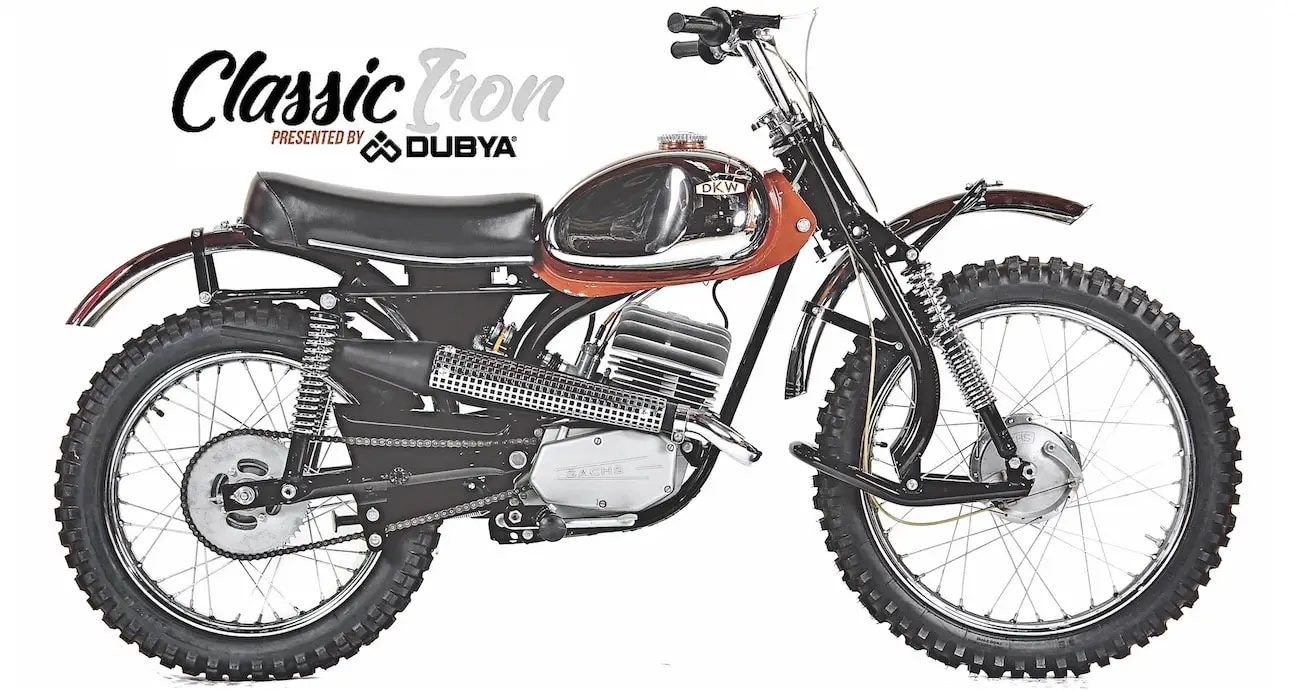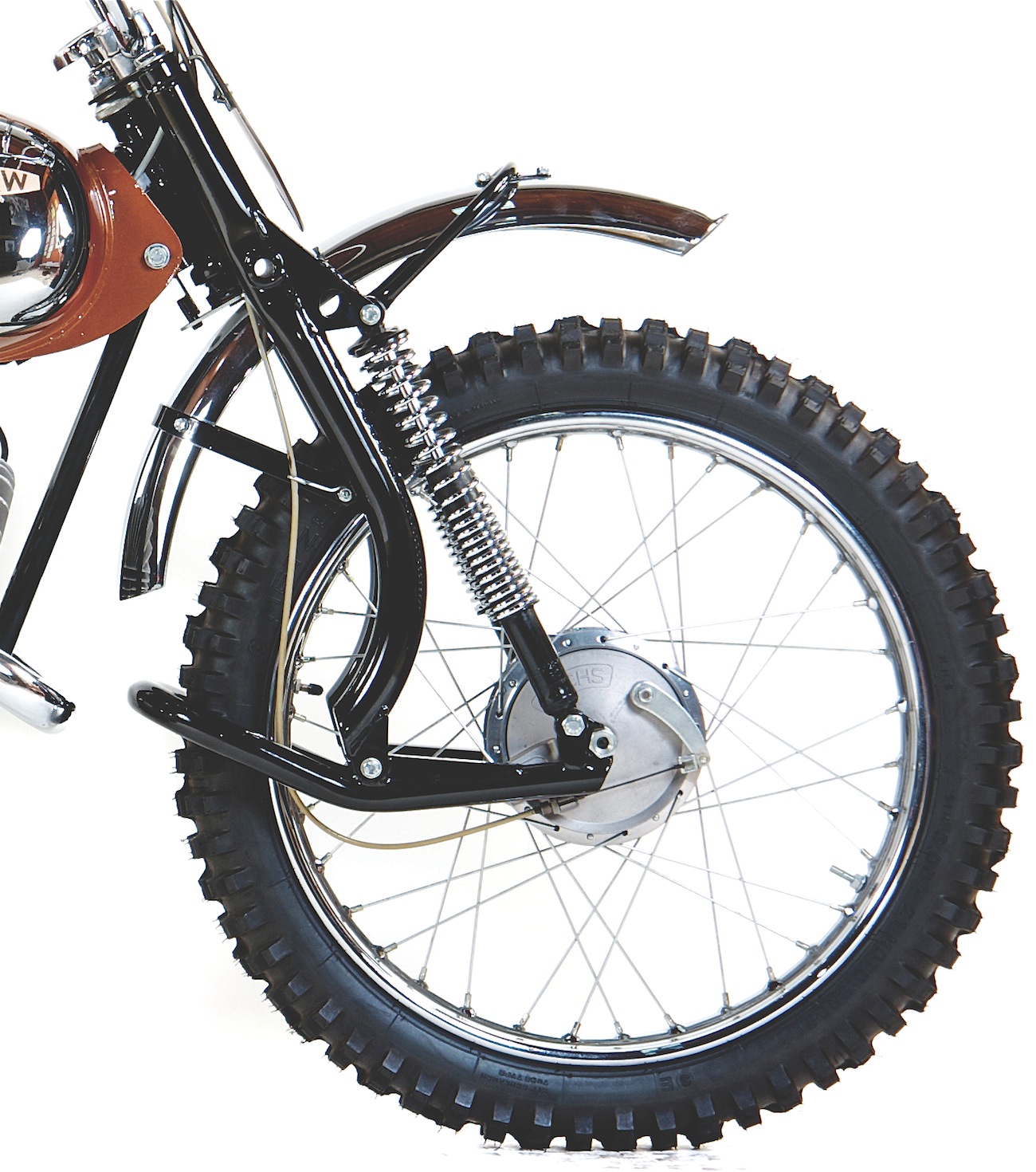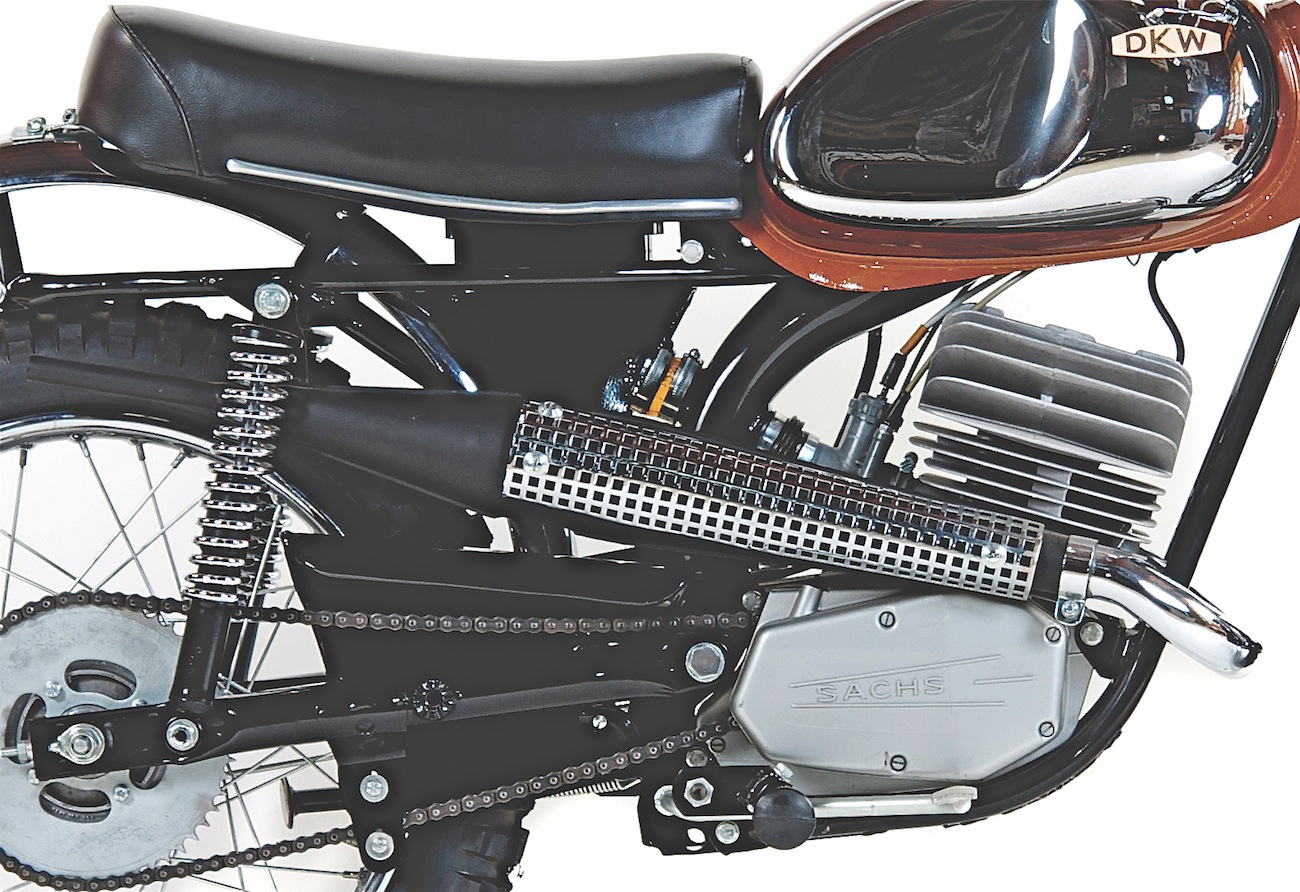CLASSIC MOTOCROSS IRON: 1971 DKW 125 LEADING LINK
 BY TOM WHITE
BY TOM WHITE
DKW, or Dampf-Kraft Wagen (German for steam-powered vehicle), goes back to 1916 when Danish engineer Jorgen Rasmussen founded a factory in Saxony, Germany, to build steam-driven cars. By the 1930s, DKW was the world’s largest motorcycle manufacturer. The German-built Sachs/DKW 125 was one of the first popular, purpose-built 125 motocross bikes in America. When motocross exploded in the USA in the late 1960s, the choice of good entry-level machines was limited to Hodaka Ace 90s, Kawasaki Green Streaks and a potpourri of oddball brands.
European brands, such as Bultaco, Monark, Zundapp, CZ, Puch and even Maico, were the first choice of aspiring 125-class motocross racers, and, for a brief window of time, the $748 DKW was at the top of the list with its rugged motocross-inspired styling. The Sachs five-speed engine had huge cylinder fins and excellent power. When combined with DKW’s dual-cradle frame, leading-link forks and Boge shocks, the DKW was right on the mark for the U.S. market. Further helping DKW sales was very effective U.S. distributor Ted Lapadakis. For motocross, the machines were originally called Sachs 125s. Sachs, who also supplied engines to Penton, Monark, Hercules and KTM, merged with DKW in the 1960s, and by 1970 the Sachs 125s were rebadged as DKW 125s. In the mid-’70s, DKW development fell behind. The leading-link forks were dropped, and the last DKW was rebadged as a Hercules in 1980.
Five-speed DKW/Sachs from 1968 to 1971 were available in 100cc and 125cc models. In 1972, six-speed models were introduced. DKWs were nearly bulletproof (with the exception of the Sachs engine’s many false neutrals). The shifting problems were mitigated by the Koba shift kit, proper adjustment and replacing worn-out transmission parts. Fueled by a 27mm Bing carb, the DKW 125 featured Magura controls, a handlebar-mounted choke lever and Metzeler tires. If you didn’t want leading-link forks, telescopic Betor forks were an option. The Betor forks became so popular that ultimately the leading links became the option.
Our example was owned by MXA publisher Roland Hinz. It was sold to the Early Years of Motocross Museum for $4500. Don’t pay more than $2000 for a good, unrestored DKW. Bodywork and trim parts are hard to find‚ especially the gas tank, badges, chrome fenders, leading-link forks and stock pipe; however, the Sachs engine parts are easy to find.
For more info on classic bikes go to www.earlyyearsofmx.com







Comments are closed.